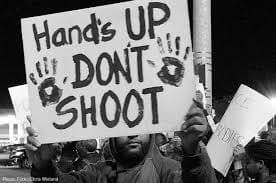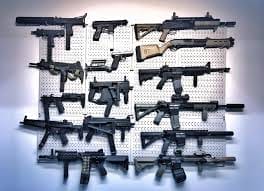by Jason Tarnow | Jul 2, 2020 | Crime, Criminal Attorney, Legal Rights, Media, Police, Riots, Social Media, Wheels Of Justice
Over the last couple of months, there has been outcry from the public urging the use of BWC’s (Body Worn Cameras) for Canadian law enforcement. Although initially in response to the growing unrest relating to police brutality in the United States, there are echoes of abandoned intentions from Canadian officials dating back at least a few years.
Back in 2015, the Office of the Privacy Commissioner of Canada (“OPCC”) issued a publication regarding the use of BWC by police, in collaboration with privacy agencies in Alberta, New Brunswick and Quebec. The remaining Canadian law enforcement agencies from other provinces and territories acted “in consultation”.
For reference: according to the CBC, there were a total of 2 incidents involving the death of individuals at the hands of law enforcement in New Brunswick between 2012 and 2014, 12 incidents in Quebec, and 14 incidents in Alberta. Interestingly enough, British Columbia (on par with Quebec at 14 deaths) and Ontario (with the highest rate of police violence resulting in death in the country at 25 deaths between 2012 and 2014) were only acting in consultation.
The report hails the effectiveness of BWC to capture high quality images, videos, and audio recordings – so effective, in fact, that the OPCC had grave concerns regarding their ability to capture material that could jeopardize the privacy of innocent and uninvolved bystanders.

The report goes on to tout the value of BWC for evidentiary purposes, including analytics so sophisticated that the material obtained would likely be suitable for biometric comparison – aka, facial recognition.
There is no arguing the fact that the use of BWC by police has implications for the privacy of citizens in their everyday lives – especially since once fitted, citizens would likely expect on-duty officers to have their devices on a continuous basis as opposed to intermittently.
Benefits of BWC include the ability to review interactions between police and the public, recording communications between the police and suspects in the course of an investigation, identifying potential witnesses, and of course recording interactions between police officers. Many criminal cases involve evidence obtained through the use of dash cams, which provide audio from inside a police cruiser and video from the perspective of the driver. The effectiveness of this technology loses value when the investigation takes place outside of a police vehicle, as the audio often fails to capture intelligible communications between police and a suspect, or between officers themselves. Although the dash cam is kept running, the audio portion is often useless when the interactions between police and a suspect take place outside the vehicle, and the windows of the police cruiser are closed, or if the police/suspect leave the immediate area where the audio is successfully captured.
The report indicates that while continuous recording would undoubtedly provide a greater level of accountability for the actions of police, the threat to personal privacy reigns supreme:
“From an accountability perspective, continuous recording may be preferable because it captures an unedited recording of an officer’s actions and the officer cannot be accused of manipulating recordings for his or her own benefit. However, from a privacy perspective, collecting less or no personal information is always the preferred option”
In 2014, the Edmonton Police concluded a pilot project regarding the use of BWC by its officers. The conclusion?:
“The cameras had no effect on police use-of-force incidents and said there was no statistical difference in resolving police complaints”
According to an analysis done by CBC, there were a total of four deaths between 2012 and 2014 relating to officers of the Edmonton Police Service. By comparison, there were 9 deaths in the same period relating to officers of the Toronto Police Service. The results of the Pilot Project may have seen different results in a different jurisdiction.
The Edmonton Police explained that in addition to being ineffective to expose cases of police misconduct, the related expenses were simply unrealistic. Perhaps surprisingly, it’s not the cost of the devices themselves, but the expense to store and manage all of the material collected: somewhere between 6 and 15 million dollars over five years, which also includes hiring personnel qualified for the job.
Finding the balance between accountability, transparency and oversight of police against the protection of privacy for Canadian citizens is a legitimate and profound task – one that cannot be taken lightly. As the calls for BWC in Canadian law enforcement grow louder, and as Canadians revisit the reality of what it is to be privileged in this country, we can only hope that the values of dignity and equality are recognized as being more valuable than the cost of the equipment that very well could save lives.
by Jason Tarnow | Jun 23, 2020 | Crime, Legal Aid, Legal Rights, Media, Police, Politics, Riots, Social Media, Wheels Of Justice
“Systemic racism is so rampant in the United States, I’m from Canada so I can’t even imagine what that must be like!”
“Police brutality in the US makes me proud to be Canadian”
The two statements above reflect a dangerous and widespread misconception held by many Canadians as they observe growing unrest in the United States:
“Deaths of minorities at the hands of law enforcement just isn’t an issue here”
Of course, nothing could be further from the truth.

Systemic racism exists in institutions across Canada – and an analysis of police brutality against minorities performed by CBC reveals some startling data.
Between 2000 and 2017, CBC was identified 461 fatal encounters between law enforcement and civilians. The RCMP– Canada’s largest and only federal police force – is responsible for the highest number of incidents at 118 casualties, followed by the Toronto Police Service at 52, and the Service de police de la Ville de Montreal at 32. The data demonstrates that these occurrences continue to rise steadily across the country.
When looking at the study, it is obvious that Caucasian individuals represent the largest number of victims per ethnic group, composing roughly 43% of all casualties identified. They also represent nearly 80% of Canada’s total population.
Indigenous victims represent roughly 16% of all casualties identified, but account for less than 5% of Canada’s total population.
Black victims represent roughly 10% of all casualties identified, but account for less than 3% of Canada’s total population.
22% of the victims were unable to be identified by ethnicity.
These facts are alarming and highlight a trend of violence by law enforcement against identifiable minorities. Aggravating circumstances further, it is estimated that mental health and substance abuse issues afflicted approximately 70% of the 461 victims.
The data further reveals that the majority of these occurred in urban areas with diverse cultural communities – not within areas densely populated by minorities. What this means is that of the percentage of the 461 fatalities that involve people of color is grossly disproportionate to the overall population of the areas affected.

Gun related deaths accounted for over 71% of the 461 fatalities, use of restraint at just shy of 16%, physical force at 1.3%, use of an intermediate weapon (a tool not designed to cause death with conventional use, such as a baton) at 1.1%, and “other” accounting for 10.1% of deaths.
Perhaps most shocking of all is that these statistics have not been compiled and presented by the organizations with the most reliable sources of information – the law enforcement agencies themselves.
The analysis conducted by CBC provides a glimpse into the systemic racism that is alive and well within law enforcement agencies across the country, but it hardly tells the entire story.
The data relates only to fatalities – it does not represent the wrongful arrests and prosecutions of minorities in Canada, the disproportionate sentences that are imposed, or the loss of dignity and liberty.
It does not represent the interactions that don’t result in an arrest or charges, nor does it represent the victims of racism and bias who will never have the opportunity to tell their stories.
by Jason Tarnow | May 20, 2020 | Crime, Criminal Attorney, Legal Aid, Legal Rights, Media, Police, Social Media, Wheels Of Justice
It goes without saying that the judicial system has been hit hard by COVID-19. This isn’t wildly surprising – there was no solid emergency response strategy in place for a situation like this, and as a result, a significant amount of time and resources have been expended to create a sense of control amongst the chaos.
It was acknowledged early on that certain individuals in the justice system would be disproportionately effected – accused persons in custody awaiting trial or sentencing, residents of remote communities that operate under a court circuit, and, of course, the victims in cases where there is uncertainty of if or when the case proceeds at all.
Since the World Health Organization declared a pandemic in response to COVID-19, law enforcement has tried to adapt where required. One of the most profound changes relates to the processing of newly accused individuals – and it may provide context into why intimate partner violence has surged during the pandemic. Between April 6 and May 6, 2020, 8 tragic incidents of domestic violence against women across Canada resulted in fatalities. There is, of course, no doubt about the fact that violence in relationships occurred before COVID-19, and will continue long after the pandemic is declared over – but there are aspects to a surge in intimate partner violence that are directly linked to the virus and to the policies that have been implemented when trying to process, manage, and supervise offenders.
Hundreds of accused persons awaiting trial in custody have been released, with chargeable offences ranging from assault, fraud, drug trafficking and beyond. Again, not surprising – as we’ve discussed previously on the blog, the correctional system serves as the perfect breeding ground for the virus, and it would be beyond cruel and unusual to take no action at all to protect those that are considered to be among the most vulnerable.
It’s the way that law enforcement has chosen to operate on a “catch and release” scheme in cases that would, under normal circumstances, require a bail hearing – and probably a highly contested one at that – that has likely contributed to domestic violence rates during COVID-19. Due to concerns about the nature of the virus and its ability to spread quickly, bail hearings have occurred less frequently, even with video-conferencing and telephone conferencing put into effect to streamline the process and protect the health of all parties involved. Instead of a bail hearing, an accused is more likely to be released on an Undertaking. The Undertaking may require that the accused check in with a bail supervisor weekly – something that is generally done on an in-person basis, where the most value lies in a face-to-face meeting – by telephone instead.

Aside from that, the “stay at home” order has, unintentionally, resulted in many victims of violence becoming prisoners in their homes. Public services like shelters and safe houses are stretched beyond capacity, and for some (especially people with underlying health conditions and people with children) entering into such an environment during a virus pandemic might seem even less tolerable than continuing to cohabitate with their abuser.
As with the other aspects of our lives – returning to work and school, chatting with our neighbors, planning vacations – the judicial system will, in one way or another, return to full operational capacity. But for those who have suffered the effects of intimate partner violence during the pandemic, there may be no return to the way things once were.
by Jason Tarnow | May 12, 2020 | Crime, Criminal Attorney, Legal Aid, Legal Rights, Media, Riots, Social Media
On March 18, 2020, the BC court system responded to the coronavirus pandemic swiftly and without hesitation, reducing operations by the likes of which criminal counsel simply hasn’t seen before. Once it was confirmed how rapidly COVID19 spreads, the crowded confines of publicly accessed courtrooms were immediately deemed inappropriate – dangerous even. Since courtrooms often yield a congregation of some of society’s most vulnerable people, it made perfect sense to act defensively. These decisions, and many others effecting the justice system, were made only one week after the World Health Organization declared a global pandemic on March 11, 2020.
Unfortunately, there was a noticeable absence of urgency when it came time to protect the vulnerable inmate population overcrowded and totally confined within the walls of Mission Institution.
“In the worst-case scenario, CSC will need to order more body bags and find cold storage to stack up the bodies of those whose lives will be lost that could have been saved” – Justin Piche, criminologist, Criminalization and Punishment Project at the University of Ottawa
On March 31, 2020, federal Public Safety Minister Bill Blair recommended that the Correctional Service of Canada (“CSC”) immediately consider the release of non-violent inmates to mitigate the unavoidable reality that the virus could, and would, devastate the wellbeing of prison populations. His recommendation came on the heels of the CSC announcing the first two positive COVID-19 cases in federal institutions in Quebec.

On April 4, 2020, the CSC announced 4 confirmed cases at Mission Institution, leading to a lockdown of the facility.
By April 8, 2020, there were 11 confirmed cases, all inmates. Nearly one month had passed since the WHO declared a global pandemic.
By April 18, 60 inmates and 10 staff tested positive, and the CSC marked its first coronavirus related inmate death, exactly one month after the courts effectively shut down.
By April 25, 2020, 106 inmates and 12 correctional officers were confirmed to be infected, representing the largest outbreak in the Canadian Correctional System. On this date, the CSC advised that all inmates at Mission Medium Institution had been tested, but in any event, new cases were continuing to be discovered.
While disturbing, none of these developments are surprising. The largest incidence of outbreaks has been at long-term care homes – combining close quarters, limited mobility, and care-workers employed at more than one facility is a recipe for disaster when it comes to COVID-19, a pathogen that spreads and infects without discrimination. The same vulnerabilities exist within the correctional system, where they are intensified. Inmates and corrections staff are simply unable to practice crucial social distancing. Personal protective equipment for inmates has not been prioritized as it has in other sectors, despite these individuals being at a much higher risk of getting sick.

The CSC responded to COVID-19 by prohibiting visits to inmates, temporary absences, work releases, and inmate transfers between correctional facilities. While these steps likely helped to curb the spread of the virus, as a whole, they are grossly inadequate. Without a vaccine, social distancing remains our greatest defence against the virus. For the inmates at Mission Institution and those incarcerated at facilities across Canada, proper protective equipment is hard to come by, but hope is even harder.
by Jason Tarnow | May 5, 2020 | Crime, Legal Rights, Media, Police, Social Media, Wheels Of Justice
On April 18 and 19 2020, Gabriel Wortman was solely responsible for the largest mass shooting in Canadian history, which claimed the lives of 22 innocent people including veteran RCMP Cst. Heidi Stevenson. Wortman, a 51 year old denturist, went on a rampage in Portapique, Nova Scotia using firearms that police suspect were obtained illegally, likely from the United States. Eventually he was cornered at a gas station and died in a shootout with police.
Just shy of two weeks later, Prime Minister Justin Trudeau announced a ban on approximately 1,500 different models of military grade assault-style weapons. The announcement came as a surprise to no one – back in 2015, the Liberal government campaigned on promises to address gun violence. In addition to banning assault-style weapons, the Liberal government vowed to implement a buy-back program for prohibited firearms, establish red-flag legislation, impose tighter restrictions for proper storage of firearms and licensing, and to grant municipalities the power to ban handguns.
Trudeau’s announcement has sparked outrage among gun owners and enthusiasts, although overall most Canadians are in favour of stricter regulations regarding firearm ownership.

It’s important to understand what the ban actually applies to. It prohibits the sale, transport, import and use of semi-automatic weapons – Ruger Mini-14, M14 semi-automatic, Beretta CX4 Storm, and CSA-VZ-58 to name a few. Fully automatic weapons are already banned in Canada. Semi-automatic firearms were previously classified as either restricted or non-restricted, and will now be classified as prohibited.
So what do you do if you already have these in your possession? That depends.
Due to their classification as prohibited weapons, effected firearms will essentially become useless. In any event, gun owners will not be forced to relinquish them – but they will be provided with an incentive to do so. Though unclear at this point, the Canadian Government will be implementing a “buy back” program for all applicable firearms – aka, you’ll be paid to turn them over. For gun owners wishing to retain their firearms, there will be an option to be “grandfathered” into ownership. Certain terms and restrictions will apply, and will likely turn these weapons into collector’s items.
Unlike in the United States, our Charter does not include a constitutional right to bear arms

For those who choose to do nothing and simply retain their weapons, the consequences could be severe. Being found in possession of a prohibited firearm comes with the potential of spending years behind bars and a criminal record that could negatively impact employment and traveling prospects for life. The Canadian Government has instituted an amnesty period (waiting period) to allow for gun owners to consider their options. In any event, all gun owners must be in compliance, one way or another, by April 2022.
Though there is definitely a tight-knit community of lawful and responsible gun owners in Canada, the point of the ban is to limit access of tactical weapons among Canadians. Unlike in the United States, our Charter does not include a constitutional right to bear arms – so you can be sure that tighter regulations are on the horizon.








